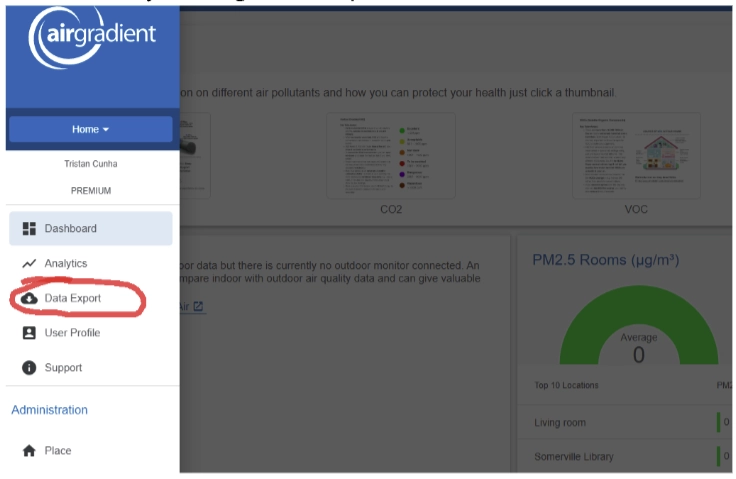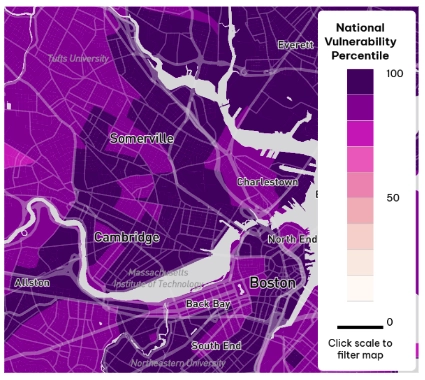Somerville Indoor Air Quality Monitor
Step 1
Plug in the air quality monitor
Step 2
All current air quality information is on the screen on the monitor. For more information about each measurement you need to connect it to WiFi and login to the dashboard.
Step 3
To record and view indoor air quality data, you can connect the monitor to wi-fi:
- On your phone or laptop look for a wifi hotspot created by the air quality monitor, it will be called “airgradient-404cca6…”. Use password “cleanair” to connect.
- Connect to that wi-fi hotspot, this will bring you to the air quality monitor’s WiFi Manager screen.
- If the WiFi manager screen doesn’t come up, go to address 192.168.4.1 on your browser
- Click on "Configure WiFi"
- Select your home WiFi network and enter the password and click “connect”
Step 4
Go to this page to see the dashboard: https://app.airgradient.com/dashboard
Login with the email and password printed on the monitor
- After login, on the top of the page, click for more information about each measurement, on any of the guides below:

- This will show you your data for the different air quality measurements, you can click on any of them to see historical data like this:

This dashboard also shows the outdoor air quality from the air quality monitor at the Somerville Public Library
If you want to download your data before returning the air quality monitor to the library, you can access it from the menu in the top left of the dashboard by clicking “Data export”

- All recorded data will be deleted from the dashboard when you return the monitor.
Air Quality Sommerville
According to the Environmental Defense Fund’s (EDF) Climate Vulnerability Index, many of Somerville’s communities are exposed to high levels of air pollution that harm our bodies. Figure 1 maps the exposure and risk intensity, notice that much of the intense exposure and risk areas occur by the highway. This is important to note for Sommerville communities because it is estimated that approximately 10% of pediatric asthma cases are attributable to road traffic pollution.

Indoor Air Quality
The US national outdoor standard for NO2 should not exceed an average of 100 parts per billion in a given hour. Propane and gas stoves are a large source of indoor air pollution. Even when windows are open, and range hoods are on, the air in homes using gas or propane stoves have concentrations of NO2 exceeding 100 ppb for hours after stove use in the bedrooms farthest from the kitchen. In smaller homes, less than 800 square feet, the NO2 exposure is four times the exposure of people living in large residences greater than 3000 square feet. Exposure to NO2 is associated with increased rates of all-cause adult mortality and pediatric asthma.